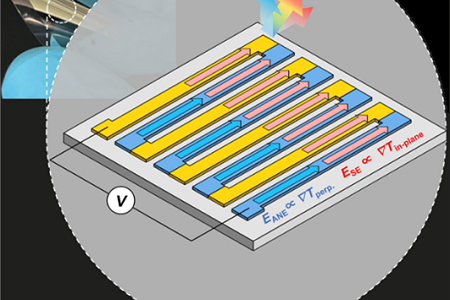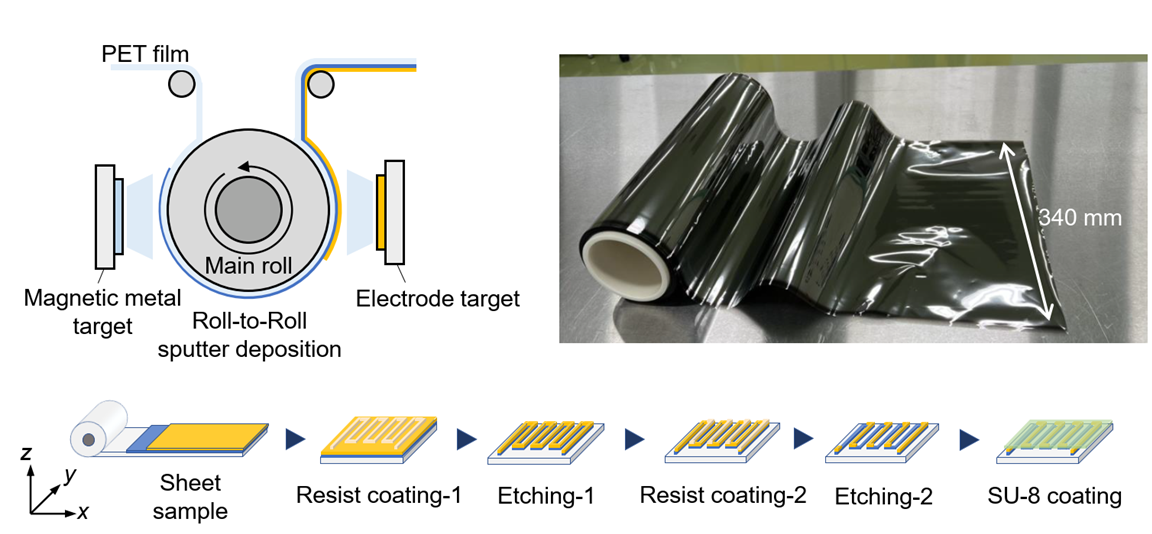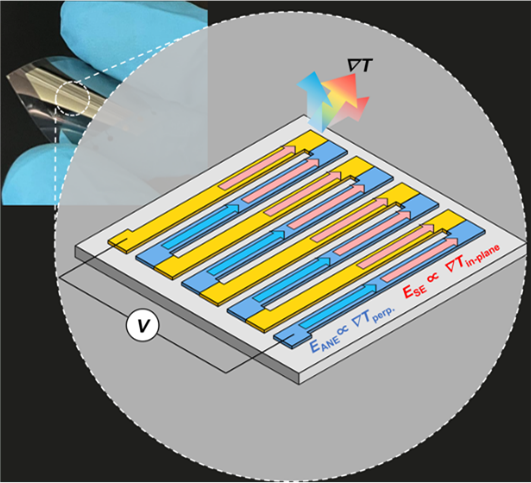Novel thermal sensor could help drive down the heat A robust, low-cost sensor can monitor heat flow in devices to improve efficiency Research news

Excess heat from electronic or mechanical devices is a sign or cause of inefficient performance. In many cases, embedded sensors to monitor the flow of heat could help engineers alter device behavior or designs to improve their efficiency. For the first time, researchers exploit a novel thermoelectric phenomenon to build a thin sensor that can visualize heat flow in real time. The sensor could be built deep inside devices where other kinds of sensors are impractical. It is also quick, cheap and easy to manufacture using well-established methods.
According to the law of conservation of energy, energy is never created or destroyed but only changes form from one to another depending on the interaction between the entities involved. All energy eventually ends up as heat. For us that can be a useful thing, for example, when we want to heat our homes in winter; or detrimental, when we want to cool something down, or get the most out of a battery-driven application. In any case, the better we can manage the thermal behavior of a device, the better we can engineer around this inevitable effect and improve the efficiency of the device in question. However, this is easier said than done, as knowing how heat flows inside some complex, miniature or hazardous device is something ranging from the difficult to the impossible, depending on the application.
Inspired by this problem, Project Associate Professor Tomoya Higo and Professor Satoru Nakatsuji from the Department of Physics at the University of Tokyo, and their team, which included a corporate partnership, set out to find a solution. “The amount of heat conducted through a material is known as its heat flux. Finding new ways to measure this could not only help improve device efficiency, but also safety, as batteries with poor thermal management can be unsafe, and even health, as various health or lifestyle issues can relate to body heat,” said Higo. “But finding a sensor technology to measure heat flux, while also satisfying a number of other conditions, such as robustness, cost efficiency, ease of manufacture and so on, is not easy. Typical thermal diode devices are relatively large and only give a value for temperature in a specific area, rather than an image, of the heat flux across an entire surface.”

Making films. The roll-to-roll sputter deposition manufacturing technique is well established and can create etchable films in large quantities for use in commercial settings. ©2023 Tanaka et al. CC-BY-ND
The team explored the way a heat flux sensor consisting of certain special magnetic materials and electrodes behaves when there are complex patterns of heat flow. The magnetic material based on iron and gallium exhibits a phenomenon known as the anomalous Nernst effect (ANE), which is where heat energy is unusually converted to an electrical signal. This is not the only magnetic effect that can turn heat into power, though. There is also the Seebeck effect, which can actually create more electrical power, but it requires a large bulk of material, and the materials are brittle so hard to work with. ANE, on the other hand, allowed the team to engineer their device on an incredibly thin and malleable sheet of plastic.

Making tracks. By etching the circuits in a special alternating pattern, undesirable effects are reduced which would otherwise impede the circuits’ ability to produce usable data. ©2023 Tanaka et al. CC-BY-ND
“By finding the right magnetic and electrode materials and then applying them in a special repeating pattern, we created microscopic electronic circuits that are flexible, robust, cheap and easy to produce, and most of all are very good at outputting heat flux data in real time,” said Higo. “Our method involves rolling a thin sheet of clear, strong and lightweight PET plastic as a base layer, with magnetic and electrode materials sputtered onto it in thin and consistent layers. We then etch our desired patterns into the resultant film, similar to how electronic circuits are made.”
The team designed the circuits in a particular kind of way to boost ANE whilst also suppressing the Seebeck effect, as this actually interferes with the data-gathering potential of ANE. Previous attempts to do this were unsuccessful in any way that could be easily scaled up and potentially commercialized, making this sensor the first of its kind.
“I envisage seeing downstream applications such as power generation or data centers, where heat impedes efficiency. But as the world becomes more automated, we might see these kinds of sensors in automated manufacturing environments where they could improve our ability to predict machine failures, certain safety issues, and more,” said Nakatsuji. “With further developments, we might even see internal medical applications to help doctors produce internal heat maps of specific areas of the body, or organs, to aid in imaging and diagnosis.”
Papers
Hirokazu Tanaka, Tomoya Higo, Ryota Uesugi, Kazuto Yamagata, Yosuke Nakanishi, Hironobu Machinaga, Satoru Nakatsuji, "Roll-to-Roll Printing of Anomalous Nernst Thermopile for Direct Sensing of Perpendicular Heat Flux," Advanced Materials: July 24, 2023, doi:10.1002/adma.202303416.
Link (Publication )
)





